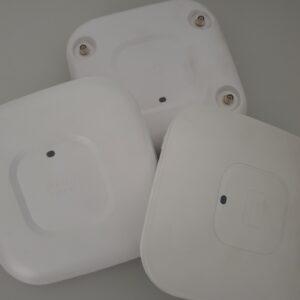Introduction
Autonomous Aironet WLAN Access Points (APs) are wireless network devices that allow devices to connect to a Wi-Fi network. These APs are called "autonomous" because they operate independently without a centralized controller managing the configuration and operation. In contrast to controller-based APs, which require a central controller to configure and manage the wireless network, autonomous APs are designed to be self-contained and independently to manage. They are ideal for small networks or for situations where a controller-based deployment is not feasible or necessary. Autonomous APs can be configured via a web-based interface, which allows network administrators to configure and manage the APs and the wireless network they create. These APs support a variety of wireless standards, including IEEE 802.11a/b/g/n/ac, and can operate in either the 2.4 GHz or 5 GHz frequency band. Autonomous APs also offer advanced security features such as WPA2 encryption and dot1x authentication, as well as support for guest access and other network services.


0 Comments